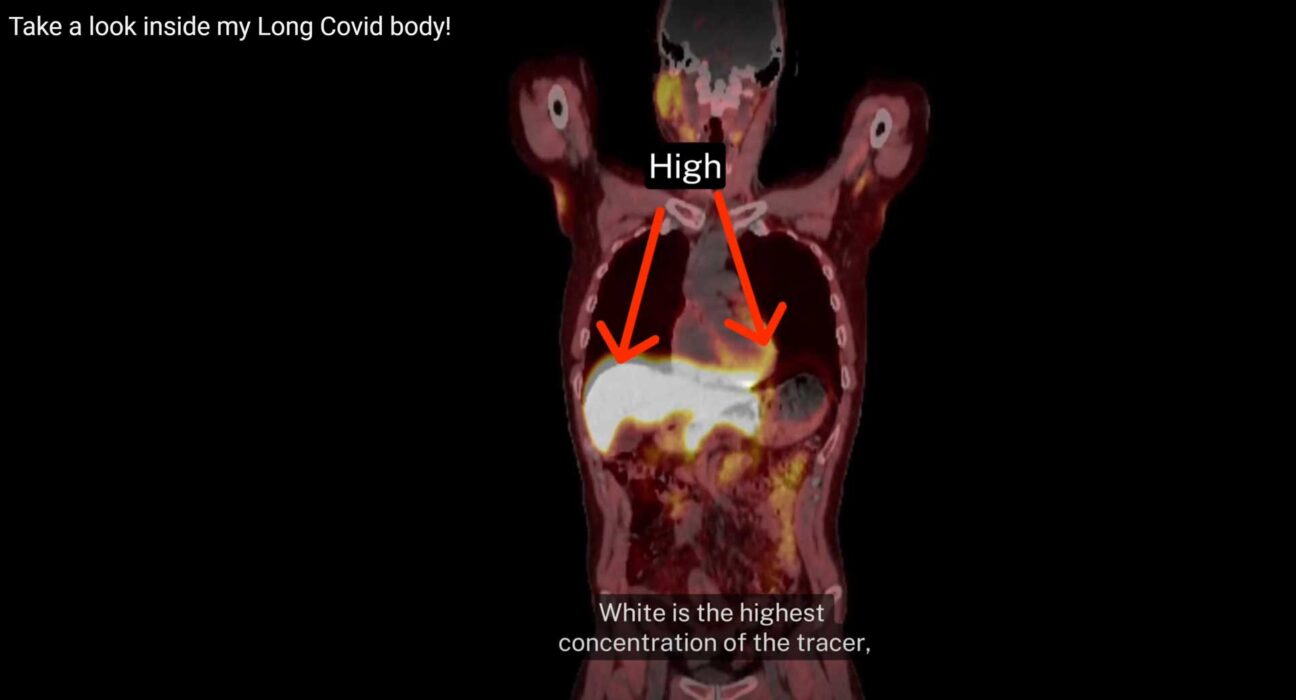Groundbreaking Study Reveals Persistent Immune Activation and Virus Presence in Long Covid Patients: Implications for Future Treatments

Summary:
A study on long Covid patients revealed persistent immune activation and potential virus presence in various organs even years after infection. The research utilized imaging techniques to identify immune activation in the brain, spinal cord, lungs, and gut wall. The findings suggest a need for further investigation into treatments targeting leftover virus and immunomodulating therapies.
Long Haulers basically ‘light up’ in the regions of their body which are imaged, with special markers on a PET scan, it could pave the way for a new type of diagnostics for Long COVID (ie other than a blood test)
Tissue-based T cell activation and viral RNA persist for up to 2 years after SARS-CoV-2 infection
Peluso et al. provide evidence for two contributors to Long Covid: persistent SARS-CoV-2 and abnormal T cell activation. Using whole-body positron emission tomography (PET) imaging with a tracer for activated T cells, the study found that individuals with Long Covid had certain tissues with higher levels of activated T cells compared to those without Long Covid. In particular, the gut showed significant T cell activation, and gut biopsies from these individuals revealed the presence of SARS-CoV-2 RNA. This suggests that ongoing viral presence and continuous immune activation are linked to Long Covid.
The mechanisms behind Long Covid are not fully understood, but there is evidence that viral persistence, immune dysregulation, and T cell dysfunction play significant roles. The study involved PET imaging in 24 participants (27 to 910 days post-infection) using [18F]F-AraG to quantify activated T lymphocytes. Higher tracer uptake was observed in Long Covid patients in several body regions, including the brain stem, spinal cord, bone marrow, lymphoid tissue, cardiopulmonary tissues, and gut wall. This T cell activation was linked to Long Covid symptoms, particularly in the spinal cord and gut wall. Additionally, gut biopsies from five participants with Long Covid showed SARS-CoV-2 RNA, suggesting that viral persistence in tissues may contribute to prolonged immune activation.
Main Points:
- Long Covid patients exhibited persistent immune activation in organs like the brain, spinal cord, lungs, and gut wall.
- Imaging techniques identified increased immune activation in specific areas associated with long Covid symptoms.
- The study underscores the importance of exploring treatments that target potential virus remnants and immunomodulating therapies to address long-term effects of Covid infection.
Resolution/Relief:
- The findings highlight the necessity for continued research to comprehend the implications of persistent immune activation and potential virus presence in long Covid patients.
- It suggests the development of treatments targeting leftover virus and immunomodulating therapies to alleviate long-term symptoms and improve patient outcomes.
Conclusion: The study provides valuable insights into the long-term consequences of Covid infection, emphasizing the urgency of investigating effective treatments for individuals with long Covid. Understanding the mechanisms behind persistent immune activation and potential virus presence could pave the way for tailored management strategies to address the complex nature of long-term Covid symptoms.
Credible Source:
May be under a subscription paywall








